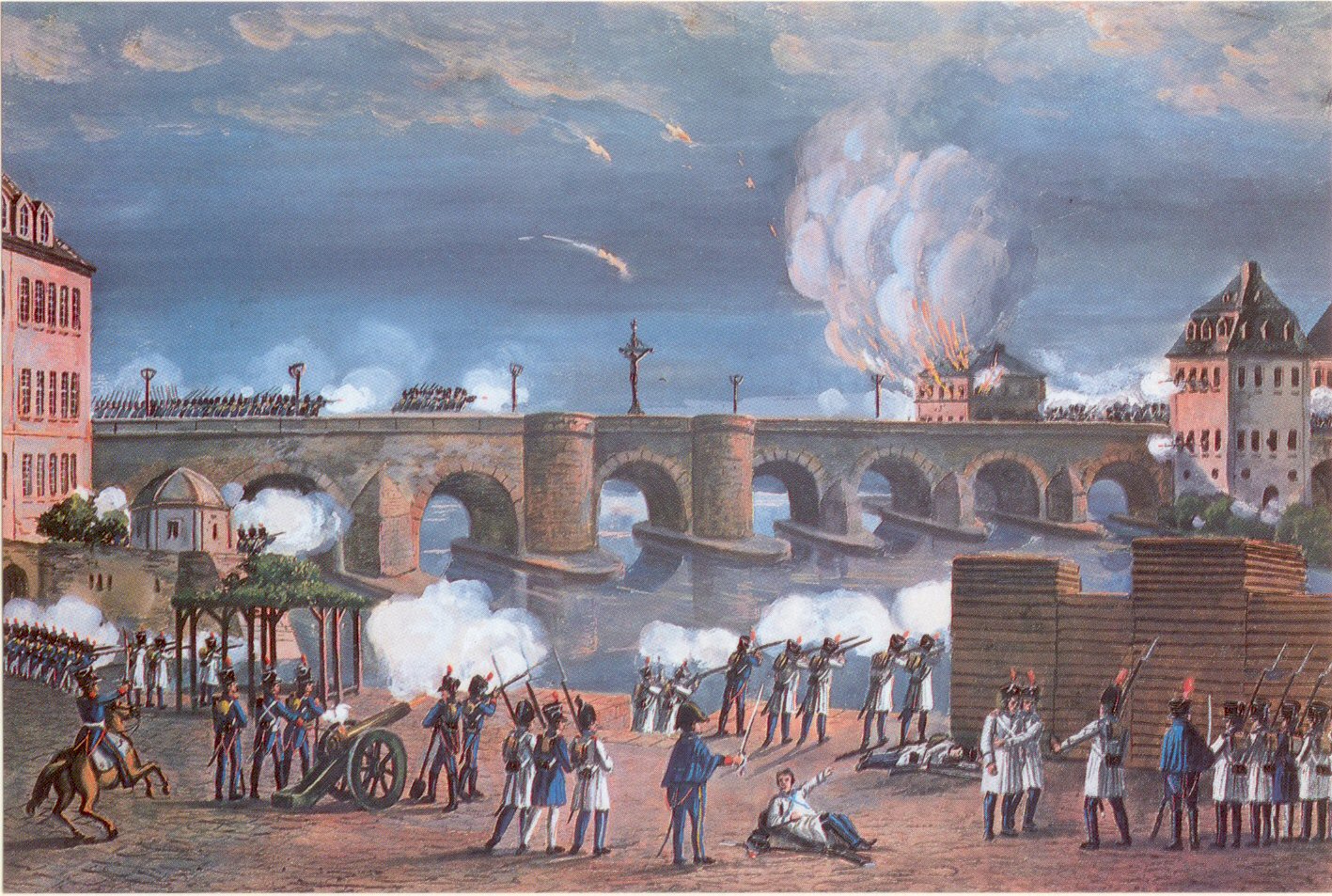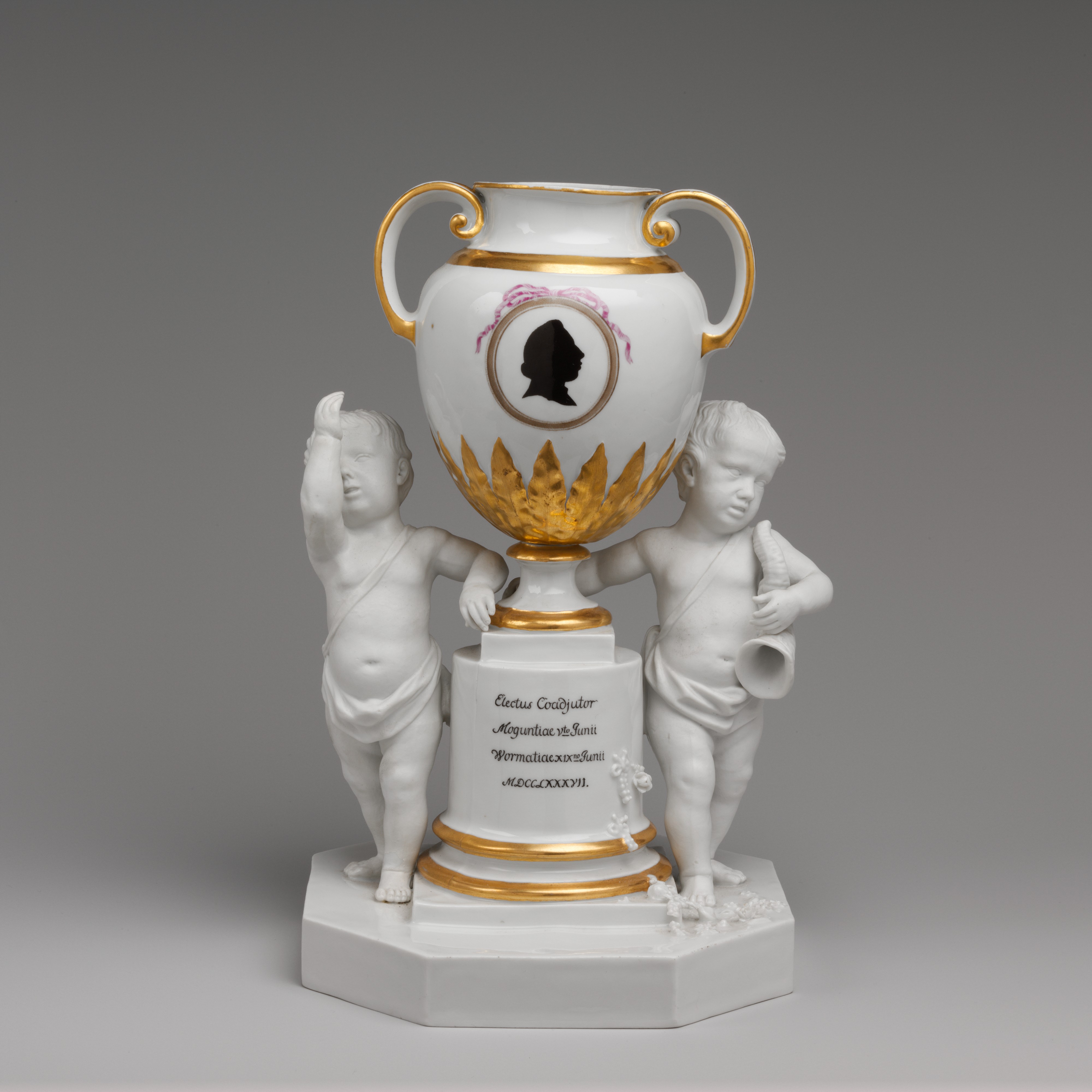|
Johann Friedrich Städel
Johann Friedrich Städel (1728–1816) was a German banker and patron of the arts. He founded the Städel Art Institute in his will, donating his entire fortune, art collection and house to the institute. Life Städel was born to Johann Daniel Städel, a spice trader who moved to Frankfurt in 1718, and Maria Dorothea Petzel, the daughter of a wealthy merchant. After his parents' deaths in 1777 and 1778, Städel took over the business, but soon transferred to banking. He was very successful in this business, doubling his wealth between 1783 and his death in 1816. He lived in his parent's house in the Kornmarkt until 1777 before moving into his own home on the . Städel began collecting paintings and drawings in 1770. By the time of his death, his collection contained around 500 paintings, mostly by Flemish, Dutch and German painters of the 17th and 18th centuries. The collection also contained over 4000 drawings. Johann Wolfgang von Goethe, the famous playwright and poet, visi ... [...More Info...] [...Related Items...] OR: [Wikipedia] [Google] [Baidu] |
Städel
The Städel, officially the ''Städelsches Kunstinstitut und Städtische Galerie'', is an art museum in Frankfurt, with one of the most important collections in Germany. The Städel Museum owns 3,100 paintings, 660 sculptures, more than 4,600 photographs and more than 100,000 drawings and prints. It has around 4,000 m2 of display and a library of 115,000 books. The Städel was honoured as "Museum of the Year 2012" by the German art critics association AICA. In the same year the museum recorded the highest attendance figures in its history, of 447,395 visitors. In 2020 the museum had 318,732 visitors, down 45 percent from 2019, due to the COVID-19 pandemic. It ranked 71st on the list of most-visited art museums in 2020. History The Städel was founded in 1817, and is one of the oldest museums in Frankfurt's Museumsufer, or museum embankment. The founding followed a bequest by the Frankfurt banker and art patron Johann Friedrich Städel (1728–1816), who left his house, a ... [...More Info...] [...Related Items...] OR: [Wikipedia] [Google] [Baidu] |
Frankfurt
Frankfurt, officially Frankfurt am Main (; Hessian: , "Frank ford on the Main"), is the most populous city in the German state of Hesse. Its 791,000 inhabitants as of 2022 make it the fifth-most populous city in Germany. Located on its namesake Main River, it forms a continuous conurbation with the neighboring city of Offenbach am Main and its urban area has a population of over 2.3 million. The city is the heart of the larger Rhine-Main metropolitan region, which has a population of more than 5.6 million and is Germany's second-largest metropolitan region after the Rhine-Ruhr region. Frankfurt's central business district, the Bankenviertel, lies about northwest of the geographic center of the EU at Gadheim, Lower Franconia. Like France and Franconia, the city is named after the Franks. Frankfurt is the largest city in the Rhine Franconian dialect area. Frankfurt was a city state, the Free City of Frankfurt, for nearly five centuries, and was one of the most import ... [...More Info...] [...Related Items...] OR: [Wikipedia] [Google] [Baidu] |
Deutsche Biographie
''Deutsche Biographie'' ( en, German Biography) is a German-language online biographical dictionary. It published thus far information about more than 730,000 individuals and families (2016).Historische Kommission bei der Bayerischen Akademie der Wissenschaften''Jahresbericht 2016'' p 7. All entries are linked to the Integrated Authority File (GND). The German Biography also contains the articles from * ''Allgemeine Deutsche Biographie'' (ADB: 1875–1912) * ''Neue Deutsche Biographie ''Neue Deutsche Biographie'' (''NDB''; literally ''New German Biography'') is a biographical reference work. It is the successor to the ''Allgemeine Deutsche Biographie'' (ADB, Universal German Biography). The 26 volumes published thus far cover ...'' (NDB: 1953–2023) * '' NDB-online'' (2020– ) References {{reflist External links Deutsche BiographieDeutsche Biographie - About German biographical dictionaries German-language websites 2001 establishments in Germany Internet propert ... [...More Info...] [...Related Items...] OR: [Wikipedia] [Google] [Baidu] |
Johann Wolfgang Von Goethe
Johann Wolfgang von Goethe (28 August 1749 – 22 March 1832) was a German poet, playwright, novelist, scientist, statesman, theatre director, and critic. His works include plays, poetry, literature, and aesthetic criticism, as well as treatises on botany, anatomy, and colour. He is widely regarded as the greatest and most influential writer in the German language, his work having a profound and wide-ranging influence on Western literary, political, and philosophical thought from the late 18th century to the present day.. Goethe took up residence in Weimar in November 1775 following the success of his first novel, ''The Sorrows of Young Werther'' (1774). He was ennobled by the Duke of Saxe-Weimar, Karl August, in 1782. Goethe was an early participant in the ''Sturm und Drang'' literary movement. During his first ten years in Weimar, Goethe became a member of the Duke's privy council (1776–1785), sat on the war and highway commissions, oversaw the reopening of silver min ... [...More Info...] [...Related Items...] OR: [Wikipedia] [Google] [Baidu] |
Karl Theodor Von Dalberg
Karl Theodor Anton Maria von Dalberg (8 February 1744 – 10 February 1817) was Prince- Archbishop of Regensburg, Arch-Chancellor of the Holy Roman Empire, Bishop of Constance and Worms, prince-primate of the Confederation of the Rhine and Grand Duke of Frankfurt. Early life and career Born in Herrnsheim near Worms, Germany, as a member of Dalberg family, he was the son of Franz Heinrich von Dalberg (1716–1776), administrator of Worms, one of the chief counsellors of the Prince-elector and Archbishop of Mainz and his wife Baroness Maria Sophie Anna von Eltz-Kempenich (1722–1763). Karl devoted himself to the study of canon law, and entered the church. Having been appointed in 1772 governor of Erfurt, he won further advancement by his successful administration. In 1787 he was elected coadjutor cum iure successionis of the Archbishopric of Mainz and the Bishopric of Worms, and in 1788 of the Bishopric of Constance; at the same time, he became titular archb ... [...More Info...] [...Related Items...] OR: [Wikipedia] [Google] [Baidu] |
Grand Duke Of Frankfurt
The Grand Duchy of Frankfurt was a German satellite state of Napoleonic creation. It came into existence in 1810 through the combination of the former territories of the Archbishopric of Mainz along with the Free City of Frankfurt itself. History  Frankfurt lost its status as a free imperial city in 1806 with the dissolution of the Holy Roman Empire. The city was granted to the former archbishop of Mainz, Karl Theodor Anton Maria von Dalberg, and became the Principality of Frankfurt. When Dalberg was forced by Napoleon to relinquish his Principality of Regensburg to the Kingdom of Bavaria in 1810, his remaining territories of Principality of Aschaffenburg, Aschaffenburg, County of Wetzlar, Wetzlar, Principality of Nassau-Orange-Fulda, Fulda, County of Hanau, Hanau ...
Frankfurt lost its status as a free imperial city in 1806 with the dissolution of the Holy Roman Empire. The city was granted to the former archbishop of Mainz, Karl Theodor Anton Maria von Dalberg, and became the Principality of Frankfurt. When Dalberg was forced by Napoleon to relinquish his Principality of Regensburg to the Kingdom of Bavaria in 1810, his remaining territories of Principality of Aschaffenburg, Aschaffenburg, County of Wetzlar, Wetzlar, Principality of Nassau-Orange-Fulda, Fulda, County of Hanau, Hanau ...
[...More Info...] [...Related Items...] OR: [Wikipedia] [Google] [Baidu] |
Städelschule
The Städelschule (), Staatliche Hochschule für Bildende Künste, is a tertiary school of art in Frankfurt am Main, Germany. It accepts about 20 students each year from 500 applicants, and has a total of approximately 150 students of visual arts and 50 of architecture. About 75% of the students are not from Germany, and courses are taught in English.Städelschule Frankfurt: Beyond the Genre Boundaries Goethe-Institut. Retrieved February 2017. History The Städelschule was established by the Städel Institute in 1817, following an endowment left by |
1728 Births
Events January–March * January 5 – The '' Real y Pontificia Universidad de San Gerónimo de la Habana'', the oldest university in Cuba, is founded in Havana. * January 9 – The coronation of Peter II as the Tsar of the Russian Empire takes place in Moscow. * January 29 – '' The Beggar's Opera'', the most popular theatrical production of the 18th century, is performed for the first time. The premiere takes place at the Lincoln's Inn Fields Theatre in London. Written by John Gay with music arranged by Johann Christoph Pepusch, the ballad opera is a satire of Italian opera. * February 28 – Battle of Palkhed: Maratha Peshwa Bajirao I defeats the first Nizam of Hyderabad, Nizam-ul-Mulk. * March 14 – Jean-Jacques Rousseau leaves Geneva for the first time. April–June * April 14 – Saint Serapion of Algiers, the first Mercedarian (of the Order of the Blessed Virgin Mary of Mercy) is canonized by Pope Benedict XIII. * Ap ... [...More Info...] [...Related Items...] OR: [Wikipedia] [Google] [Baidu] |
1816 Deaths
This year was known as the ''Year Without a Summer'', because of low temperatures in the Northern Hemisphere, possibly the result of the Mount Tambora volcanic eruption in Indonesia in 1815, causing severe global cooling, catastrophic in some locations. Events January–March * December 25 1815–January 6 – Tsar Alexander I of Russia signs an order, expelling the Jesuits from St. Petersburg and Moscow. * January 9 – Sir Humphry Davy's Davy lamp is first tested underground as a coal mining safety lamp, at Hebburn Colliery in northeast England. * January 17 – Fire nearly destroys the city of St. John's, Newfoundland. * February 10 – Friedrich Karl Ludwig, Duke of Schleswig-Holstein-Sonderburg-Beck, dies and is succeeded by Friedrich Wilhelm, his son and founder of the House of Glücksburg. * February 20 – Gioachino Rossini's opera buffa ''The Barber of Seville'' premières at the Teatro Argentina in Rome. * March 1 – The G ... [...More Info...] [...Related Items...] OR: [Wikipedia] [Google] [Baidu] |
German Bankers
German(s) may refer to: * Germany (of or related to) **Germania (historical use) * Germans, citizens of Germany, people of German ancestry, or native speakers of the German language ** For citizens of Germany, see also German nationality law **Germanic peoples (Roman times) * German language **any of the Germanic languages * German cuisine, traditional foods of Germany People * German (given name) * German (surname) * Germán, a Spanish name Places * German (parish), Isle of Man * German, Albania, or Gërmej * German, Bulgaria * German, Iran * German, North Macedonia * German, New York, U.S. * Agios Germanos, Greece Other uses * German (mythology), a South Slavic mythological being * Germans (band), a Canadian rock band * "German" (song), a 2019 song by No Money Enterprise * ''The German'', a 2008 short film * "The Germans", an episode of ''Fawlty Towers'' * ''The German'', a nickname for Congolese rebel André Kisase Ngandu See also * Germanic (other) * Ge ... [...More Info...] [...Related Items...] OR: [Wikipedia] [Google] [Baidu] |
German Art Collectors
German(s) may refer to: * Germany (of or related to) **Germania (historical use) * Germans, citizens of Germany, people of German ancestry, or native speakers of the German language ** For citizens of Germany, see also German nationality law **Germanic peoples (Roman times) * German language **any of the Germanic languages * German cuisine, traditional foods of Germany People * German (given name) * German (surname) * Germán, a Spanish name Places * German (parish), Isle of Man * German, Albania, or Gërmej * German, Bulgaria * German, Iran * German, North Macedonia * German, New York, U.S. * Agios Germanos, Greece Other uses * German (mythology), a South Slavic mythological being * Germans (band), a Canadian rock band * "German" (song), a 2019 song by No Money Enterprise * ''The German'', a 2008 short film * "The Germans", an episode of ''Fawlty Towers'' * ''The German'', a nickname for Congolese rebel André Kisase Ngandu See also * Germanic (other) * Ge ... [...More Info...] [...Related Items...] OR: [Wikipedia] [Google] [Baidu] |
.png)

.jpg)



